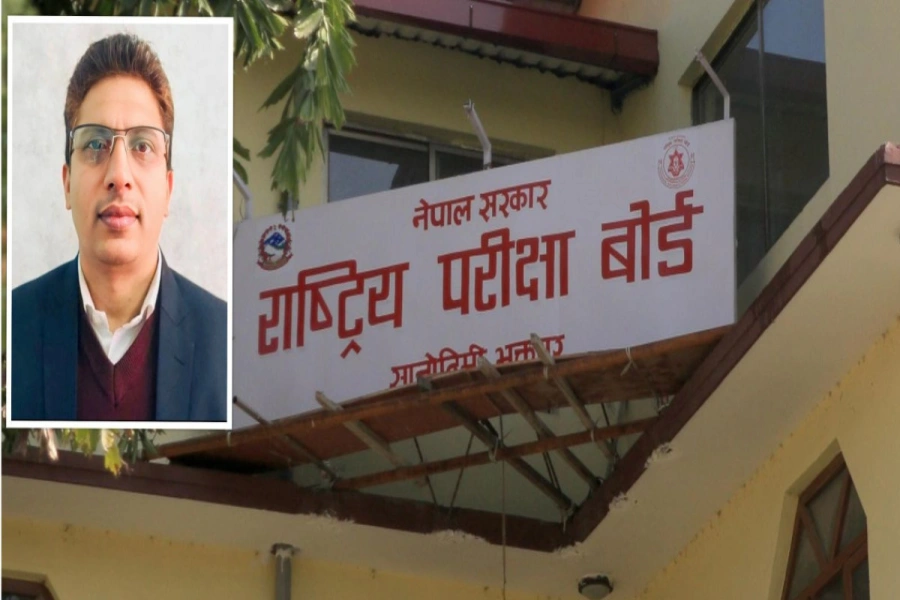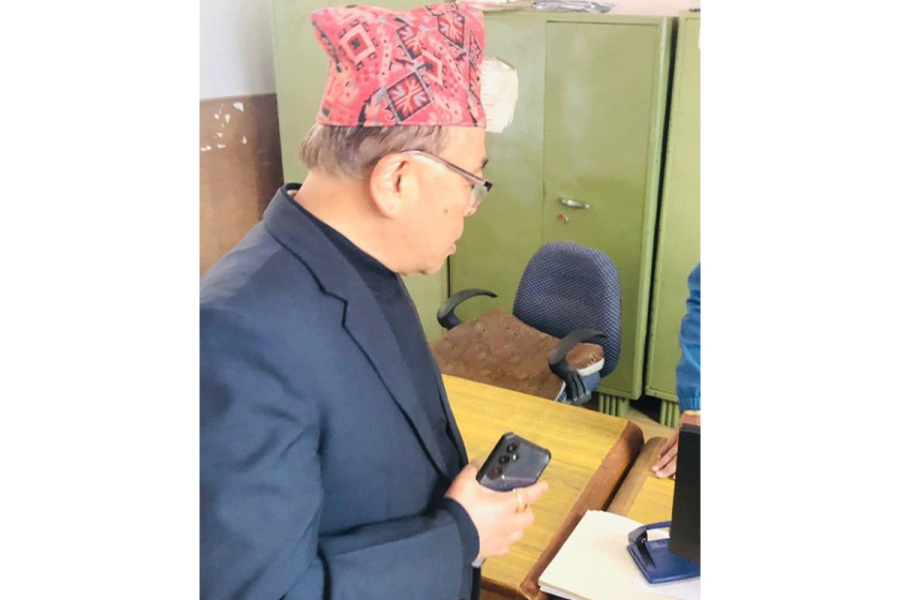To ensure children continue to learn, federal, provincial, and local governments have to find locally adaptable solutions to support the learning opportunity for children.
According to UNESCO, globally about 1.6 billion children, which account for 91 percent of all learners, are currently affected by the Covid-19 pandemic. Nepal’s over 7 million school-going children and additional university students have also been severely affected by the closure of educational institutions. When the government started lockdown on March 24, Nepal was already on the tail end of the school year, thus the first three weeks of the closure didn’t have a significant impact on students’ learning activities.
However, since the academic year in Nepal starts in mid-April, the continued shutdown of academic institutions are now likely to put most children out of educational activities for several weeks. While children from higher-income families might have the opportunity to engage in a plethora of digital learning opportunities, guided by educated and digitally literate parents; children who come from poor, marginalized and rural communities are most likely to be affected by school closures and thus further exacerbate the learning achievement gap that already exists in Nepal. Therefore, to ensure children continue to learn, federal, provincial, and local governments along with I/NGO community and teachers have to find locally adaptable solutions to support the learning opportunities for children.
Regulation of private education essential: Minister Poudel

Nepal Telecom Authority’s January 2020 data indicates that Nepal has 72.16 percent broadband penetration. However, access to the internet is largely driven by mobile phones and mobile data. About 55 percent of internet penetration is through mobile phones. Only about 17 percent of people are connected through wired (cable/fiber) and wireless technology. Even on the mobile high speed, the 4G connection is available to only about 4 million people, mostly in urban centers. This means that a large section of the population, living in semi-urban and rural communities do not have access to high-speed internet connections required to access digital materials.
According to Cable.co.uk, Nepal’s mobile internet data is the most expensive in South Asia with about $2.25 per GB, which would only cost $0.26 in India; $0.78 in Sri Lanka, $0.99 in Bangladesh and $1.25 in Bhutan. Therefore, even when there is access to mobile internet, the expenses associated with using the data will make it difficult for children from low-income families to use them, especially when their parents are out of a job and have no income. As the school year begins, private schools in Kathmandu and some urban areas are already moving on to using technology to start classes. Students going to these schools will be aided by parents in their educational activities, who are likely to be more educated and digitally literate than most parents in Nepal. Primarily coming from upper-middle-class and upper-class families, these parents are now forced at home and are able to provide direct guidance to their children, complementing teachers who will meet and interact with the students using video-conferencing and other digital tools.
However, for children from poor, marginalized communities and going to public schools, not only are they behind in their learning outcomes, as demonstrated by SEE results and Education Review Offices (ERO)’s NASA reports, now they also have to face the burden of no or limited access to school and learning materials. To mitigate these challenges, Education Cluster—primarily a consortium of international NGOs, bilateral and multilateral agencies active in Nepal and the Center for Education and Human Resource Department (CEHRD)—has planned to release student workbooks.
The workbook planned for the children up to grade four also expects parental involvement. While designed well, the immediate challenge is the print and distribution of these materials across the country. Based on my conversations with public school headteachers and Education Administrators in local governments, they are yet to receive regular school textbooks. How do we ensure that these newly minted workbooks reach students and their homes? Additionally, what do we do for kids who are in grade five and beyond? Argument seems that NCED and other digital content creators have developed digital resources and that older students can learn by themselves. However, given accessibility issues, how do we ensure that they actually can get access to these materials?
In this context, it becomes relevant to support teachers, schools and local governments to find locally appropriate solutions instead of centralizing the work at Kathmandu. Currently, about 200,000 teachers are at home. They are closer to the community and the students that they serve. Provided with guidance and support, they can and should take initiatives to develop learning materials. Most students going to public schools tend to be far behind their grade level. To illustrate, Teach For Nepal’s survey for 28,000 students studying in grades 1-8 in Tulsipur Sub- Metropolitan City in Dang showed that only 20 percent of students could solve basic division problems and 12 percent of students could read and correctly answer questions to a simple story. The survey was conducted with both public and private school students. The results for public school students were significantly worse with only seven percent of students solving division problems and 3.5 percent correctly responding to the English story.
These questions were benchmarked at Nepal’s grade three-level curriculum. Even among grade eight students, only 17 percent of students were able to correctly solve division questions and less than 10 percent of students answered English comprehension questions correctly.
Therefore, instead of focusing on trying to run regular lectures and content, remedial classes that provide opportunities for students to master basic literacy and numeracy can provide a significant boost in students’ learning. The parents, guardians, and some community members, including local activists and community members along with teachers are more likely to be able to provide direct guidance to the students when the learning materials are simpler and students are able to build their knowledge from basic content.
To further aid, local teachers and local governments can work with local FM stations to organize regular storytelling and read-aloud sessions that students can follow along. Through phone-in programs, where callers call the radio hosts, students can respond to questions or ask teachers questions if they are struggling to understand. Since Nepal’s phone penetration is 146 percent, almost all homes are likely to have access to the phone.
Additionally, schools and teachers should provide their phone numbers to students and try to reach students when possible. Ministry of Education’s data shows that over 238,000 teachers are active in public schools. If each teacher were to call 20 students a day, collectively 4.7 million children would hear from their teachers every day, which means that every two days all kids can be reached over the phone. These calls can provide a continuous linkage of students and parents to schools and teachers, thus mitigating the risk of disconnect of children from schools and eventually drop out of the education system.
Unlike children who come from relatively well-off families, children from lower-income backgrounds face multiple challenges. They aren’t likely to have access to quiet and separate space to study, would have to support families at home and in farms, and often are likely to face abuse. Therefore, teachers and community leaders need to provide psychological support. In this context, small group-based activities that maintain physical distance can also be practiced at a community level, where students gather and support each other’s learning under the guidance of local mentors.
These mentors can be senior students who are waiting to take SEE examinations or are currently studying 11/12 or even community members who are willing to provide that support to children. Over the last two decades, Nepal made an impressive achievement in basic access to education. Most children, regardless of socio-economic background, have come to attend schools. While the quality of education has been one of the major challenges, the current crisis, and prolonged school closure is likely to put all the achievements at risk. This will disproportionately impact children from poor, marginalized, and rural communities. Therefore, instead of one-size-fits-all approach led by federal ministry and department, this is the time to strengthen local governments and provide guidance to teachers spread across the country to develop and design locally appropriate solutions to engage students in learning activities.






































